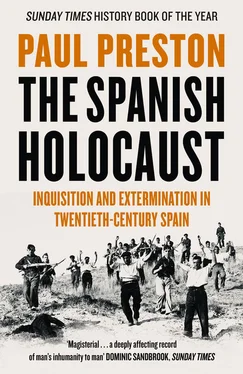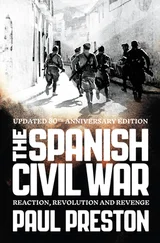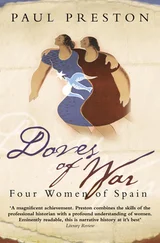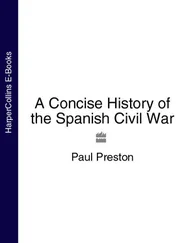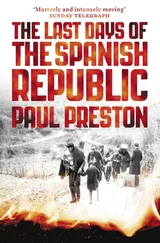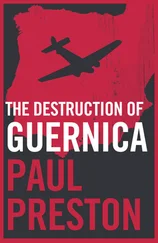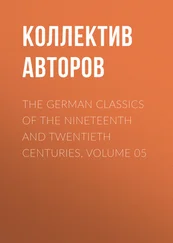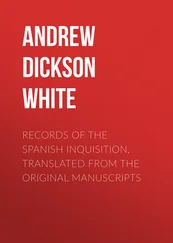Another senior propagandist of the Primo de Rivera regime, José Pemartín, linked, like his cousin Pemán, to the extreme right in Seville, also believed that Spain was under attack by an international conspiracy masterminded by Freemasonry, ‘the eternal enemy of all the world’s governments of order’. He dismissed the left, in generalized terms, as ‘the dogmatists deluded by what they think are modern, democratic and European ideas, universal suffrage, the sovereign parliament, etc. They are beyond redemption. They are made mentally ill by the worst of tyrannies, ideocracy or the tyranny of certain ideas.’ It was the duty of the army to defend Spain against these attacks. 4
Despite his temporary success in anaesthetizing the anxieties of the middle and ruling classes, Primo de Rivera’s dictatorship did not last. His benevolent attempt to temper authoritarianism with paternalism inadvertently alienated landowners, industrialists, the Church hierarchy and some of the elite officer corps of the army. Most dramatically, his attempts to reform military promotion procedures ensured that the army would stand aside when a great electoral coalition of Socialists and middle-class Republicans swept to power on 14 April 1931. After the dictator’s departure in January 1930, one of the first to take up the defence of establishment interests was Dr José María Albiñana, an eccentric Valencian neurologist and frenetic admirer of Primo de Rivera.
The author of more than twenty novels and books on neurasthenia, religion, the history and philosophy of medicine and Spanish politics, and a number of mildly imperialist works about Mexico, Albiñana was convinced that there was a secret alliance working in foreign obscurity in order to destroy Spain. In February 1930, he distributed tens of thousands of copies of his Manifiesto por el Honor de España. In it, he had declared that ‘there exists a Masonic Soviet which dishonours Spain in the eyes of the world by reviving the black legend and other infamies forged by the eternal hidden enemies of our fatherland. This Soviet, made up of heartless persons, is backed by spiteful politicians who, to avenge offences against themselves, go abroad to vomit insults against Spain’. This was a reference to the Republicans exiled by the dictatorship. Two months later, he launched his ‘exclusively Spanish Nationalist Party’ whose objective was to ‘annihilate the internal enemies of the fatherland’. A fascist image was provided by its blue-shirted, Roman-saluting Legionaries of Spain, a ‘citizen volunteer force to act directly, explosively and expeditiously against any initiative which attacks or diminishes the prestige of the fatherland’. 5
Albiñana was merely one of the first to argue that the fall of the monarchy was the first step in the Jewish–Masonic–Bolshevik conspiracy to take over Spain. Such ideas would feed the extreme rightist paranoia that met the establishment of the Second Republic. The passing of political power to the Socialist Party (PSOE – Partido Socialista Obrero Español) and its urban middle-class allies, the lawyers and intellectuals of the various Republican parties, sent shivers of horror through right-wing Spain. The Republican–Socialist coalition intended to use its suddenly acquired share of state power to implement a far-reaching programme to create a modern Spain by destroying the reactionary influence of the Church, eradicating militarism and improving the immediate conditions of the wretched day-labourers with agrarian reform.
This huge agenda inevitably raised the expectations of the urban and rural proletariats while provoking the fear and the determined enmity of the Church, the armed forces and the landowning and industrial oligarchies. The passage from the hatreds of 1917 –23 to the widespread violence that engulfed Spain after 1936 was long and complex but it began to speed up dramatically in the spring of 1931. The fears and hatreds of the rich found, as always, their first line of defence in the Civil Guard. However, as landowners blocked attempts at reform, the frustrated expectations of hungry day-labourers could be contained only by increasing brutality.
Many on the right took the establishment of the Republic as proof that Spain was the second front in the war against world revolution – a notion fed by numerous clashes between the forces of order and workers of the Confederación Nacional del Trabajo (CNT), the anarchist union. Resolute action against the extreme left by the Minister of the Interior, Miguel Maura, did not deter the Carlist newspaper El Siglo Futuro from attacking the government and claiming that progressive Republican legislation was ordered from abroad. It declared in June 1931 that three of the most conservative ministers, the premier, Niceto Alcalá Zamora, Miguel Maura and the Minister of Justice, Fernando de los Ríos Urruti, were Jews and that the Republic itself had been brought about as a result of a Jewish conspiracy. The more moderate Catholic mass-circulation daily El Debate referred to de los Ríos as ‘the rabbi’. The Editorial Católica, which owned an influential chain of newspapers including El Debate, soon began to publish the virulently anti-Semitic and anti-Masonic magazines Gracia y Justicia and Los Hijos del Pueblo. The editor of the scurrilously satirical Gracia y Justicia was Manuel Delgado Barreto, a one-time collaborator of the dictator General Primo de Rivera, a friend of his son José Antonio and an early sponsor of the Falange. It would reach a weekly circulation of 200,000 copies. 6
The Republic would face violent resistance not only from the extreme right but also from the extreme left. The anarcho-syndicalist CNT recognized that many of its militants had voted for the Republican–Socialist coalition in the municipal elections of 12 April and that its arrival had raised the people’s hopes. As one leading anarchist put it, they were ‘like children with new shoes’. The CNT leadership, however, expecting the Republic to change nothing, aspired merely to propagate its revolutionary objectives and to pursue its fierce rivalry with the Socialist Unión General de Trabajadores (UGT), which it regarded as a scab union because of its collaboration with the Primo de Rivera regime. In a period of mass unemployment, with large numbers of migrant workers returning from overseas and unskilled construction workers left without work by the ending of the great public works projects of the dictatorship, the labour market was potentially explosive. This was a situation that would be exploited by the hard-line anarchists of the Federación Anarquista Ibérica (FAI) who argued that the Republic, like the monarchy, was just an instrument of the bourgeoisie. The brief honeymoon period came to an end when CNT–FAI demonstrations on 1 May were repressed violently by the forces of order. 7
In late May, a group of nearly one thousand strikers from the port of Pasajes descended on San Sebastián with the apparent intention of looting the wealthy shopping districts. Having been warned in advance, the Minister of the Interior, Miguel Maura, deployed the Civil Guard at the entrance to the city. They repelled the attack at the cost of eight dead and many wounded. Then, in early July, the CNT launched a nationwide strike in the telephone system, largely as a challenge to the government. It was defeated by harsh police measures and strike-breaking by workers of the Socialist UGT who refused to join the CNT in what they saw as a sterile struggle. The Director General of Security, the sleek and portly Ángel Galarza of the Radical-Socialist Party, ordered that anyone seen trying to damage the installations of the telephone company should be shot. Maura and Galarza were understandably trying to maintain the confidence of the middle classes. Inevitably, their stance consolidated the violent hostility of the CNT towards both the Republic and the UGT. 8
Читать дальше
